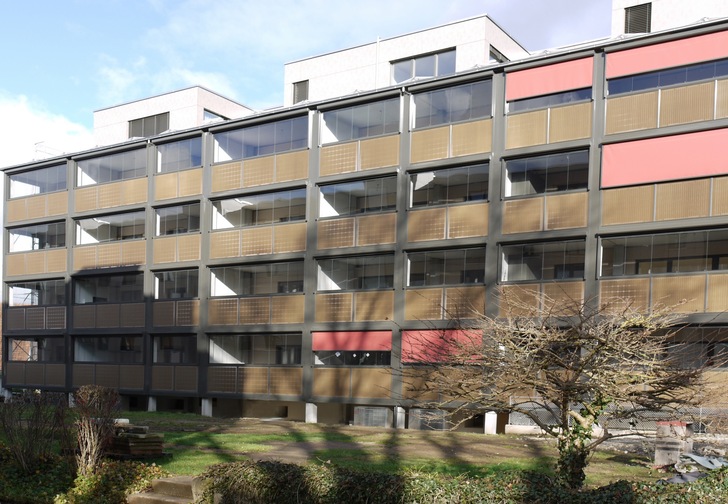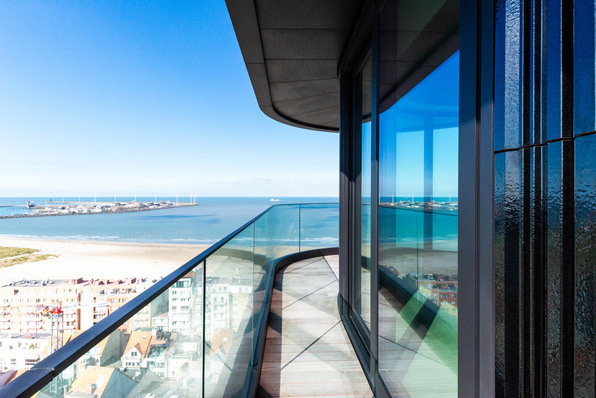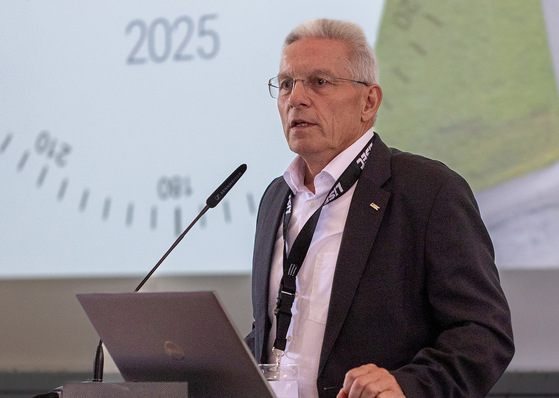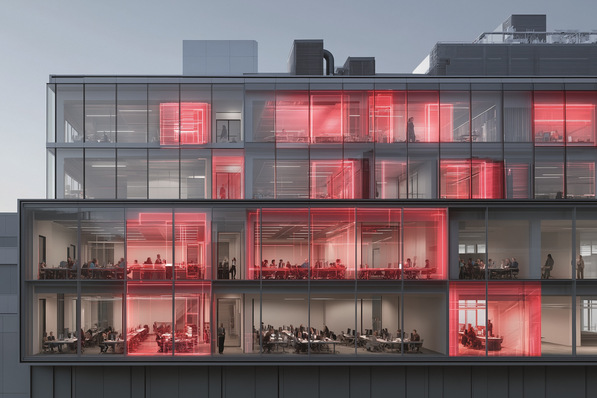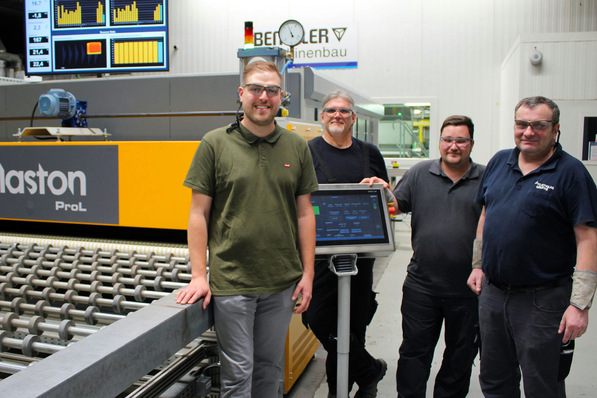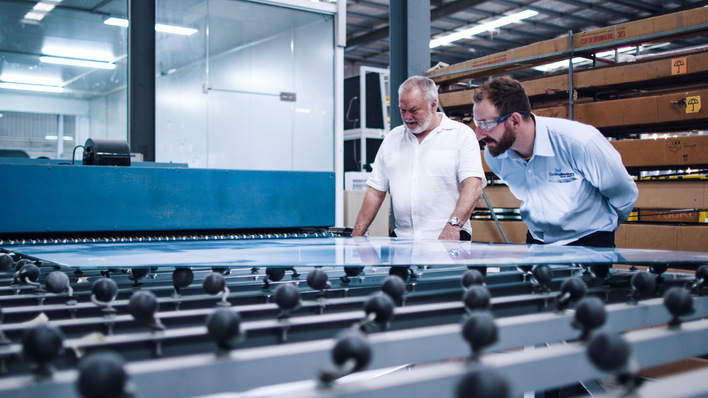Existing buildings offer great potential for energy savings. This is because they are responsible for around 40 per cent of the energy consumption in the European Union. In order to take account of climate protection, the sector is to become climate-neutral by the year 2050 - according to plans of the German government. To achieve this ambitious goal requires energy-efficient construction methods and solutions.
In the case of buildings, renewable energies - such as building-integrated photovoltaics (BIPV) - help to reduce CO2 emissions. In addition to commercial and industrial buildings, multi-storey residential buildings are also suitable for this type of energy generation, as they often provide large usable surfaces. For a long time now, the modules have not only been mounted on the roof. An optically attractive solution is, for example, mounting them on facades or parapets.
Photovoltaic modules as parapet cladding
Balco, the balcony system manufacturer, offers a solution for building-integrated photovoltaics. Here, the modules are integrated into the balustrade of the balconies, thus making efficient use of them to generate electricity. "As a company, it is important for us to keep thinking outside the box. This enables us to make our systems more innovative and forward-looking," explains Linus Ralling, Managing Director of Balco in Germany. The system is particularly suitable for refurbishment or modernisation projects - when the building will receive new balconies anyway and if roof installation is not a viable option.
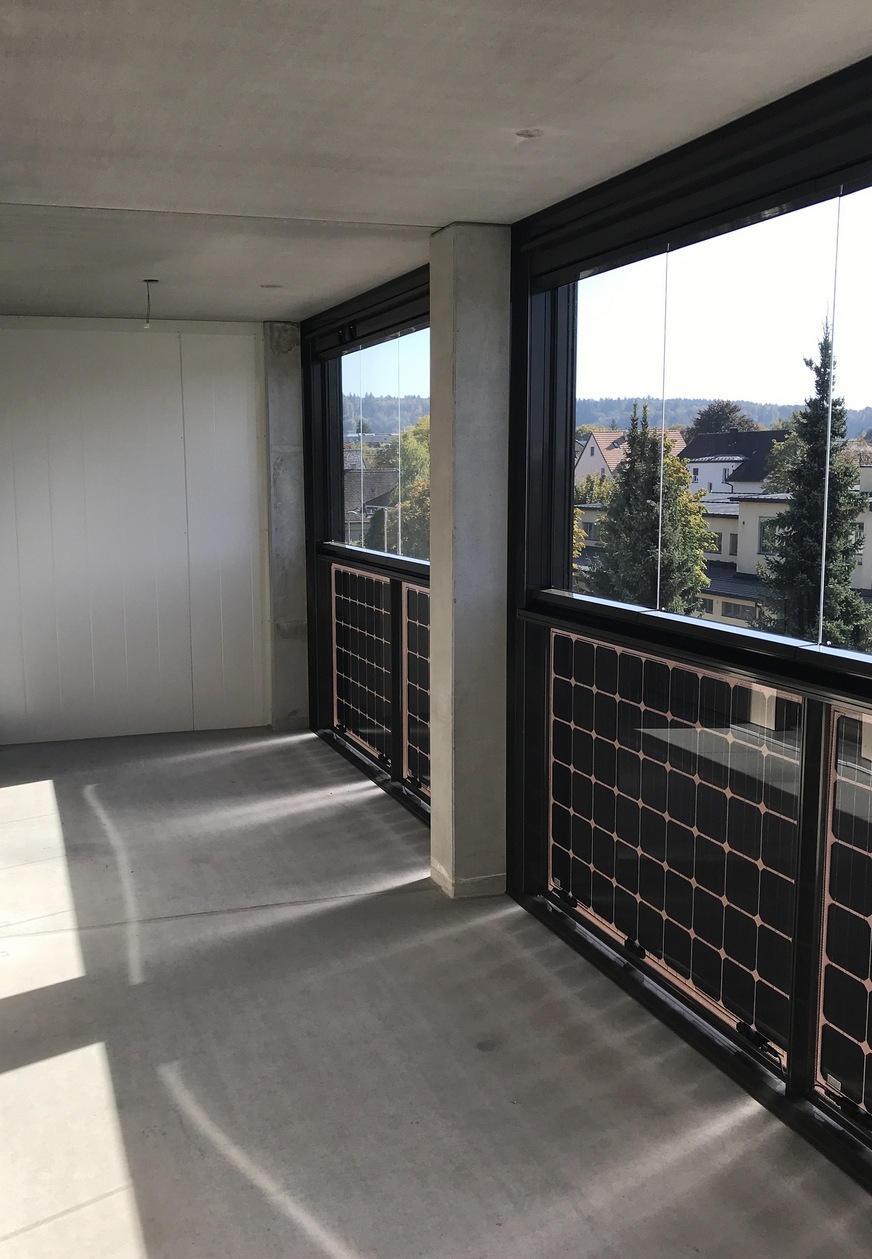
Balco Balkonkonstruktionen GmbH
The solar modules not only produce electricity, but also satisfy design considerations. Their crystalline surface gives the balconies an elegant character. They are also available in different colour variants and can therefore be individually adapted to the building in question. In order to preserve the aesthetic appearance, the cable routing and connection technology is concealed. The balustrade can be combined with all available window systems from Balco - such as the frameless glass elements "Design" or the flexible sliding and folding window "Twin". The balcony glazing creates a weather-protected exterior space that is available to residents almost all year round, thus increasing living comfort and usable space.
Practical example: Energy-efficient renovation in Switzerland
Balco Balkonkonstruktionen GmbH has now supplied 96 balconies with integrated photovoltaic elements for a residential building in Bern, Switzerland. The company was commissioned by swissREnova, a Swiss construction company from Bern-Münsingen, which places particular emphasis on sustainability and energy efficiency in its construction projects. For example, the residential building from 1963 was renovated to meet the passive house building standard. This means that it now requires 80 to 90 per cent less heating energy compared to conventional buildings. The solar balconies were developed together with the German a2-solar Advanced and Automotive Solar Systems GmbH. The company, based in Erfurt, offers solutions for building-integrated photovoltaics as well as solar systems for vehicles such as cars, buses and trains.
The PV elements were combined with the "Sight" parapet and the "Design" balcony system. The latter is particularly distinguished by its frameless glazing, which, by eliminating vertical elements, opens up an unrestricted view from the balcony. The area below the parapet was equipped with glass-glass solar modules from a2-solar. Monocrystalline solar cells were used, which are embedded between two panes of tempered laminated safety glass. The solar cells are arranged with a little space between them and the frame, which creates transparency. The outer pane of structural glass with dotted patterning and a solar-grey film on the inside give the elements their special golden colouring. This means that the parapets are virtually undetectable as solar modules from the outside. A total of 240 modules with a height of 1,090 millimetres and widths ranging from 1,407 to 1,767 millimetres were installed. They achieve an output of 46 kilowatts and can generate up to 30,000 kilowatt hours of electricity per year for self-consumption. Vertical external blinds provide privacy and shade. They allow a view from inside to outside - but not vice-versa - and thus offer privacy. In addition, they are coupled with wind and sun sensors and thus automatically adapt to any weather situation.
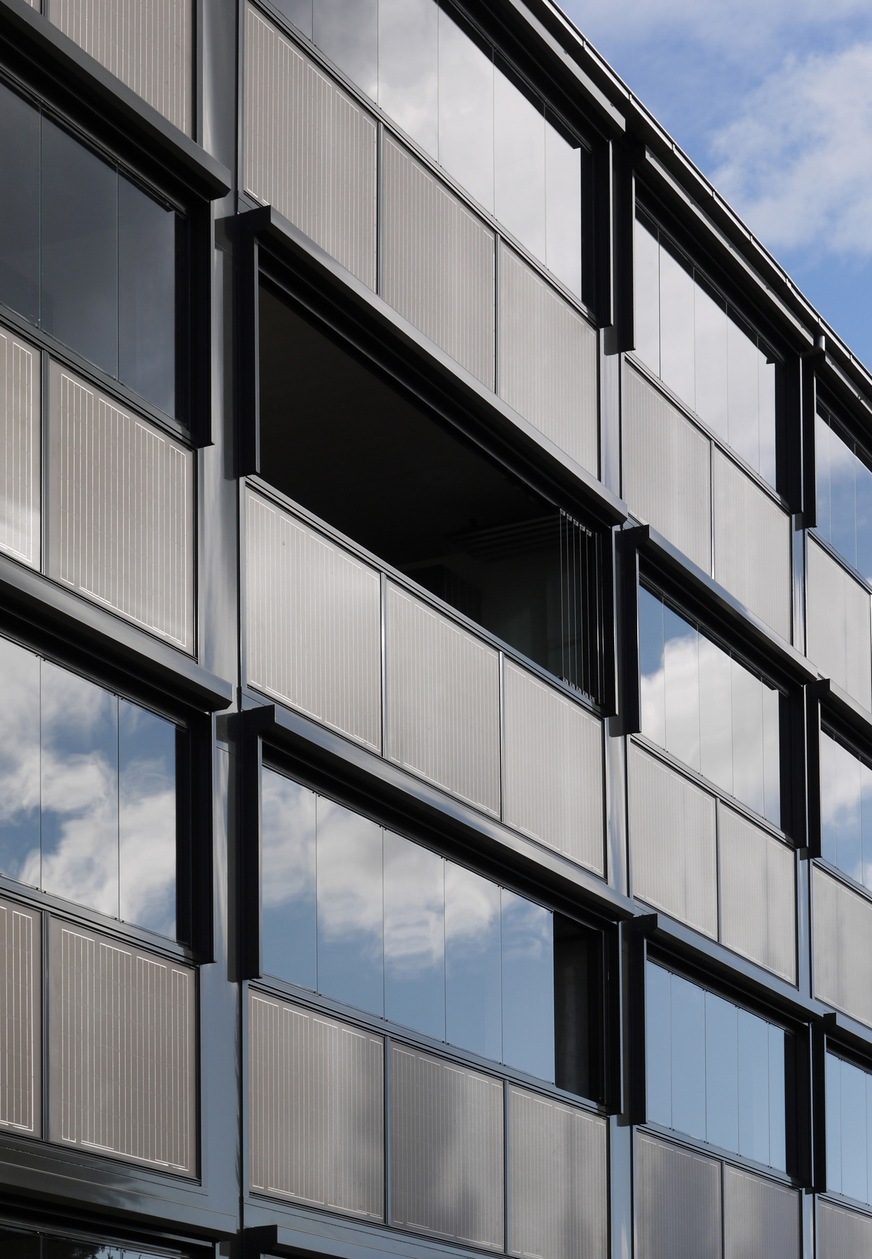
Balco Balkonkonstruktionen GmbH
The integration of PV modules in buildings is becoming increasingly important. As an alternative or in addition to conventional roof installation, Balco's solar balconies are an effective and architecturally attractive solution.







